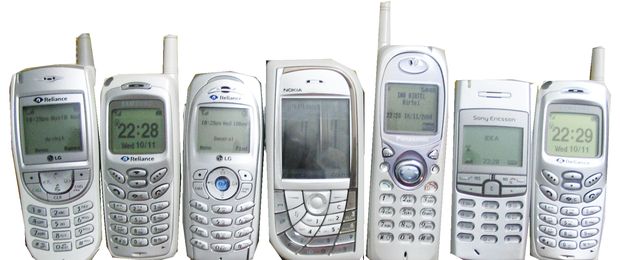40 years of mobile phones
Whether you’re relentlessly checking Facebook during lectures, Instagramming the meals you make or perhaps even making a phone call, your mobile phone is probably vital to your everyday life. Most of us couldn’t bear to imagine a world where you couldn’t be updated on global news or the goings-on of your friends, regardless of where you are. 40 years ago, our parents and grandparents could only have dreamed of the extent of modern technology, and that was when the story of the mobile phone began.
On April 3rd 1973, Martin Cooper, an inventor for Motorola, made the first ever mobile phone call. The phone weighed just under a kilogram, was over nine inches tall and had an extremely short battery life of 30 minutes. Ten years after this call, the first mobile phone was released on to the market. This phone was nothing like the ones we have today, still weighing an impressive 0.8kg and costing a huge £2500. Texting was not introduced until nine years after the phone’s release, and a camera function was not possible until 1997.
Over 75% of the world’s population currently has access to a mobile phone. There are currently over 6.5 billion mobile phone subscriptions, and in 2011 the number of mobile phone calls actually exceeded that of landline phones. The industry is now the fastest growing in the world – it’s estimated that by 2015 the number of active mobile phones will exceed the world’s population, a scenario which is already the case in over 100 countries. In Russia, the number of mobile phones in use is twice that of the population, and here in the UK we have 14 million more mobile phones than people.
It’s astounding just how far we’ve come in 40 years. However, at the current rate of progression, we must wonder what the future holds for us. There is currently extensive neural engineering research in to a brain-computer interface, in which a wireless sensor detects signals from the brain and allows the user to input a phone number in to a phone by simply thinking of the number. Soon enough, we will no longer have to even touch our phones to call somebody.
This isn’t the only impressive research being done to further mobile phone technology. It is estimated that a mobile phone is stolen every 3 seconds, and we’ve all been guilty of misplacing our phones at some point. However, in the future, our problems may be solved by actually implanting our phones underneath our skin. Simply building on the current technology of pacemakers, researchers have successfully implanted LEDs, speakers and touch sensors underneath artificial skin. Since as early as 2002, scientists have been able to successfully use implants to connect a human’s nervous systems to a computer, suggesting that a mobile phone implant may not be as far off in the future as we may think.
Phones that respond to signals from our brains or are implanted beneath our skin may seem overly futuristic; it seems like it will be years before this technology becomes commonplace in society. However, 40 years ago the idea of making a wireless phone call was unthinkable, and many of us would have struggled with the concept of smartphones as children whilst waiting for the dial-up internet to load. If technology has progressed this rapidly since the mobile phone’s invention, then it’s highly likely that we’ll see this incredible research, and much more, come to life very soon.

Comments